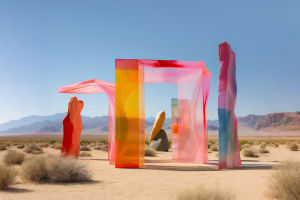Lykkers, ever wondered how those flickering images on a big screen turn into smooth, immersive stories? Welcome to a fun and fascinating look into how traditional movie projectors operate.
While digital devices are now everywhere, understanding the magic behind classic film projectors adds a unique touch to movie appreciation. Let’s take a simple journey into the heart of cinematic projection!
The Core Mechanism
Frame-by-Frame Movement
At the heart of a movie projector is a brilliant mechanical system that moves a filmstrip one image at a time. It contains individual frames—like tiny pictures—that pass behind a lens and in front of a powerful light source.
The movement isn’t continuous but alternates precisely, so each image stops briefly at just the right moment.
Light and Focus
A bright beam of light shines through each frame as it pauses. This light then travels through a lens that focuses the image and directs it onto a screen. As a result, audiences see a clear, steady picture, one frame at a time.
Shutter Action
To prevent the eye from catching the transition between frames, a shutter interrupts the light briefly during the frame change. In most projectors, this happens twice per frame.
Since standard projection rates are 24 frames per second, this results in 48 flashes of light per second—close to what the human eye perceives as continuous motion. More advanced systems now achieve up to 72 flashes per second using multiple-blade shutters, further improving smoothness.
The Evolution of Light Sources
Early Lighting Methods
In the earliest days of film, projectors used light sources based on burning mixtures, including oxygen and certain ethers. These combinations, especially with the use of highly flammable cellulose-based films, proved extremely risky.
One tragic incident occurred in 1897 during a public event in Paris, where a lamp malfunction triggered a fire, causing numerous fatalities. This led to the discontinuation of open-flame lamps in projection devices.
The Rise of Electric Arc Lamps
With the growth of electric infrastructure, safer and more effective lighting came into play. Arc lamps became the standard for professional projection. In these devices, a strong spark jumps between two closely placed electrodes inside a sealed environment.
Once triggered, the arc is maintained by separating the electrodes slightly, creating a steady and bright beam of light. The arc's position and longevity are managed by a small motor that adjusts for wear.
Modern Xenon Lamps
Today’s high-performance projectors use gas-filled lamps containing two electrodes, typically inside an enclosure filled with xenon gas. These are ignited by a high-voltage electrical spark instead of mechanical contact.
Xenon lamps are preferred because they emit a bright, white light with a color temperature between 5600 and 6200 K, very similar to natural daylight when the sun is at its peak. This helps display vivid and true-to-life images on the screen.
Projectors for Home Use
Halogen-Based Models
In personal and amateur projection devices, halogen lamps are more commonly used. These generate a softer light with a color temperature of around 3200 K, resulting in a warmer tone.
This suits home viewing and amateur film types such as Kodachrome, giving a cozy, friendly glow to the picture.
Practical Home Theater Setups
Modern home cinema systems are built to offer a convenient balance between affordability and viewing quality. Halogen-based models, while less bright than xenon options, are more than adequate for smaller screens and dimly lit rooms. Their compact design, lower maintenance, and pleasant color output make them popular for casual movie nights.
In Conclusion
Understanding how movie projectors work opens up a new appreciation for film watching, Lykkers! From precise frame movements and clever shutters to safe, efficient light sources, every part of the projector plays a key role in bringing stories to life.
While digital screens are here to stay, the charm and ingenuity of these projection machines still hold a special place in the history of entertainment. So next time you watch a film, just remember—the magic starts long before the first scene appears.


